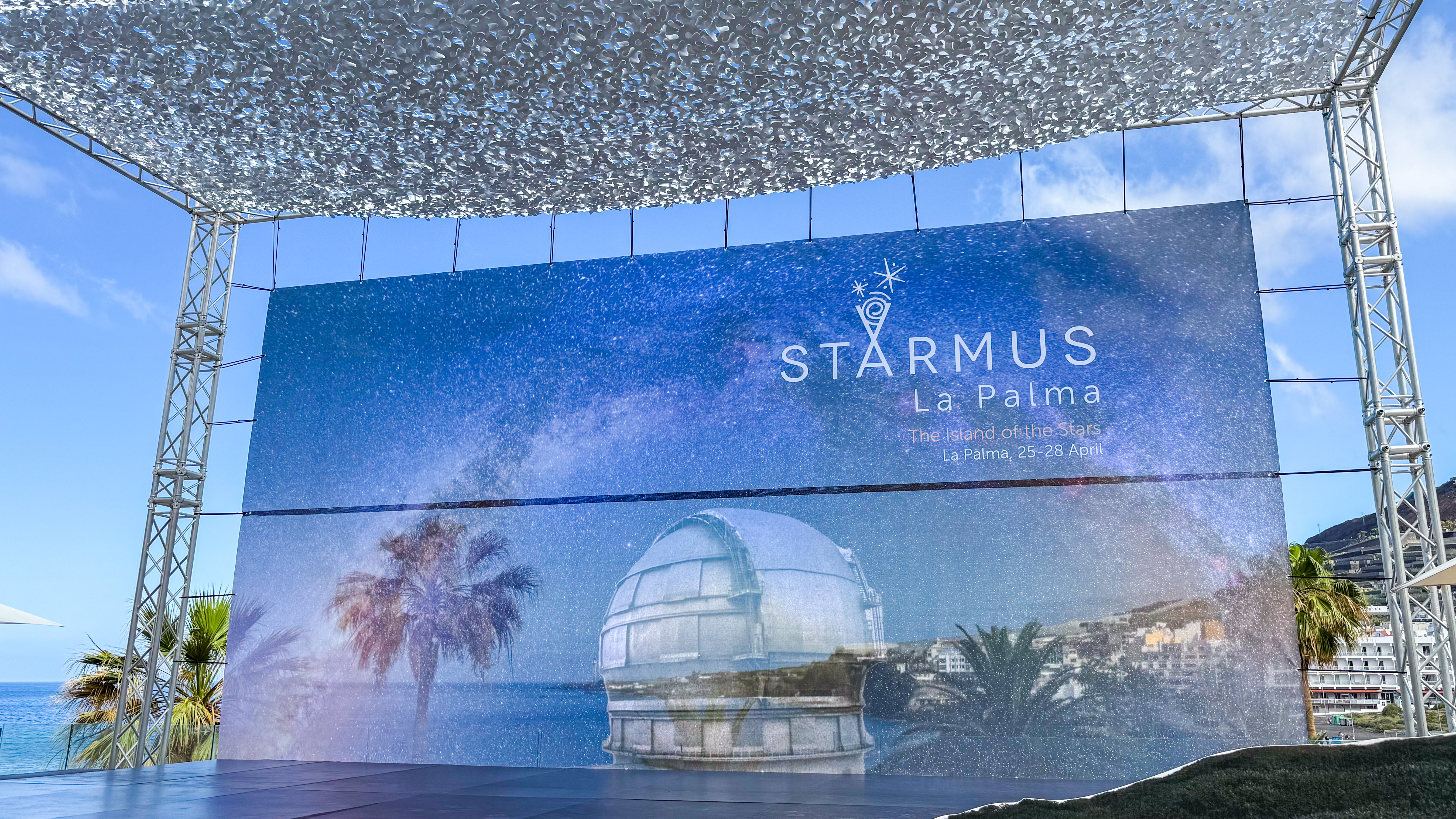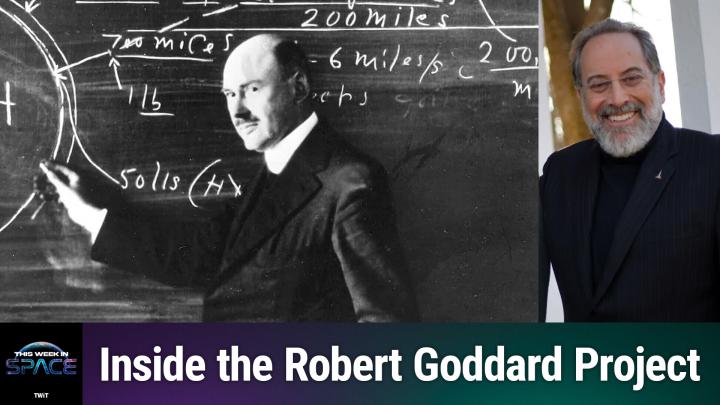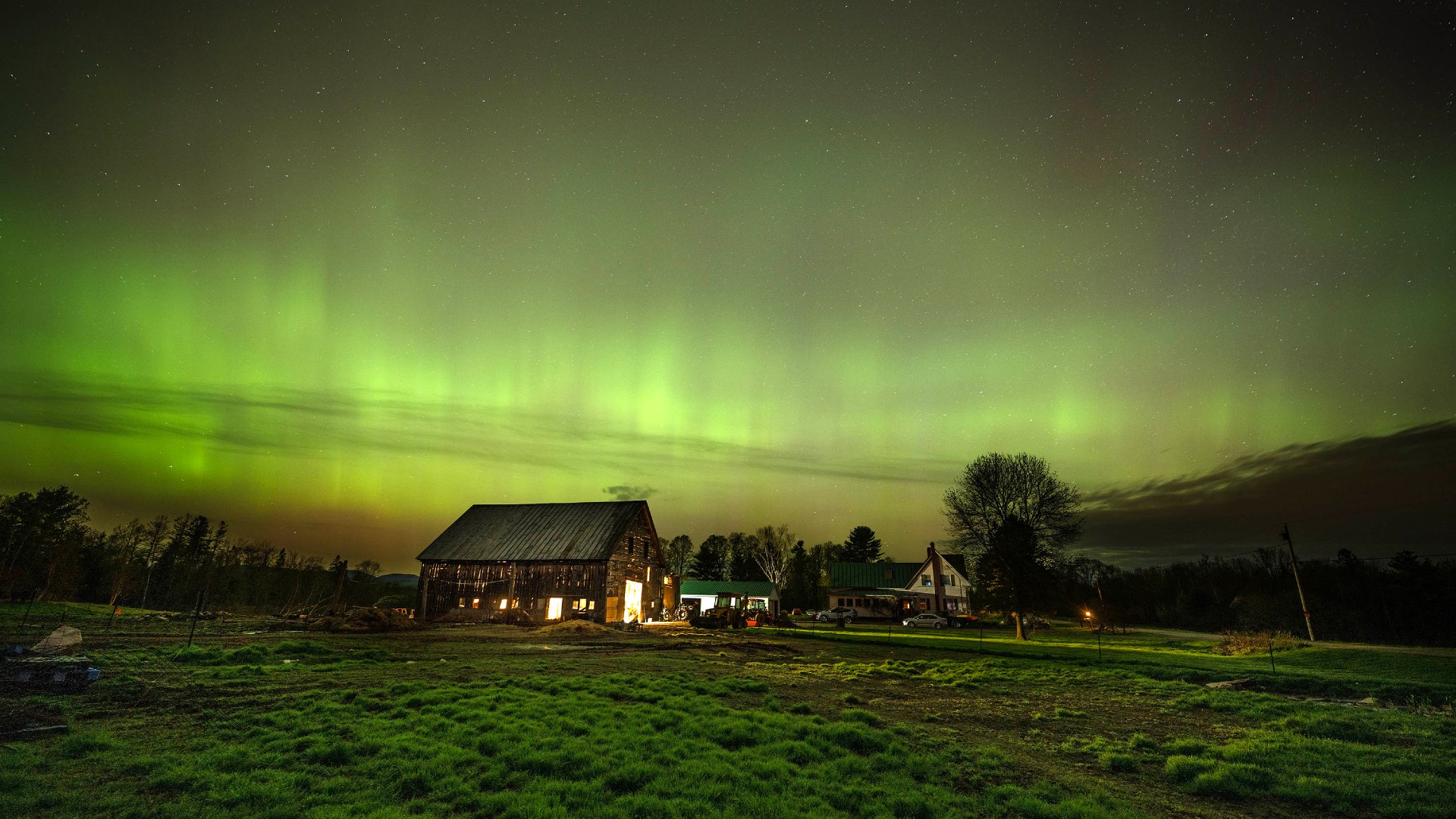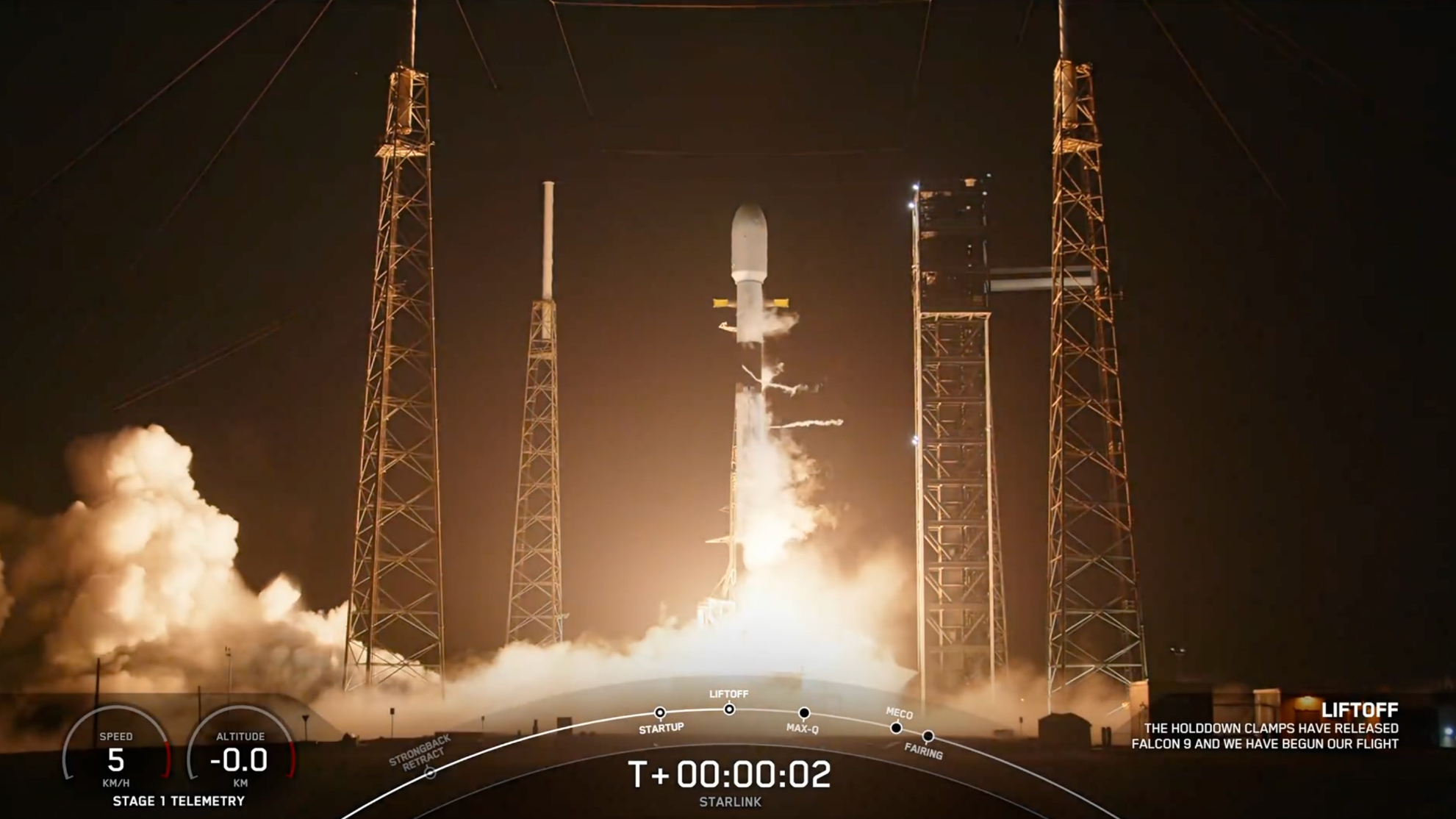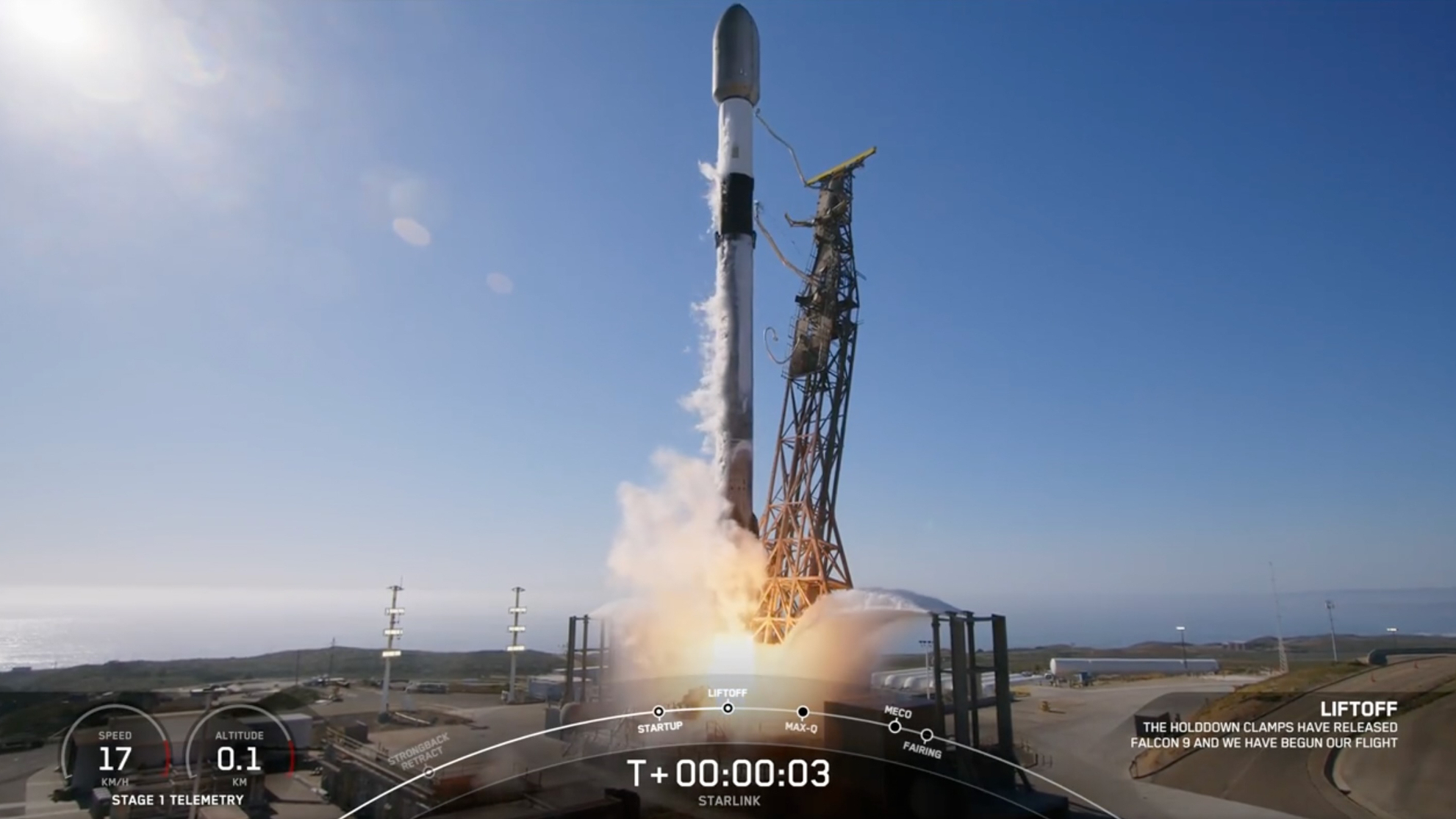Space Image of the Day Gallery (April 2016)
Image of the Day Archives

For older Image of the Day pictures, please visit the Image of the Day archives. Pictured: NGC 2467.
My Dark Life
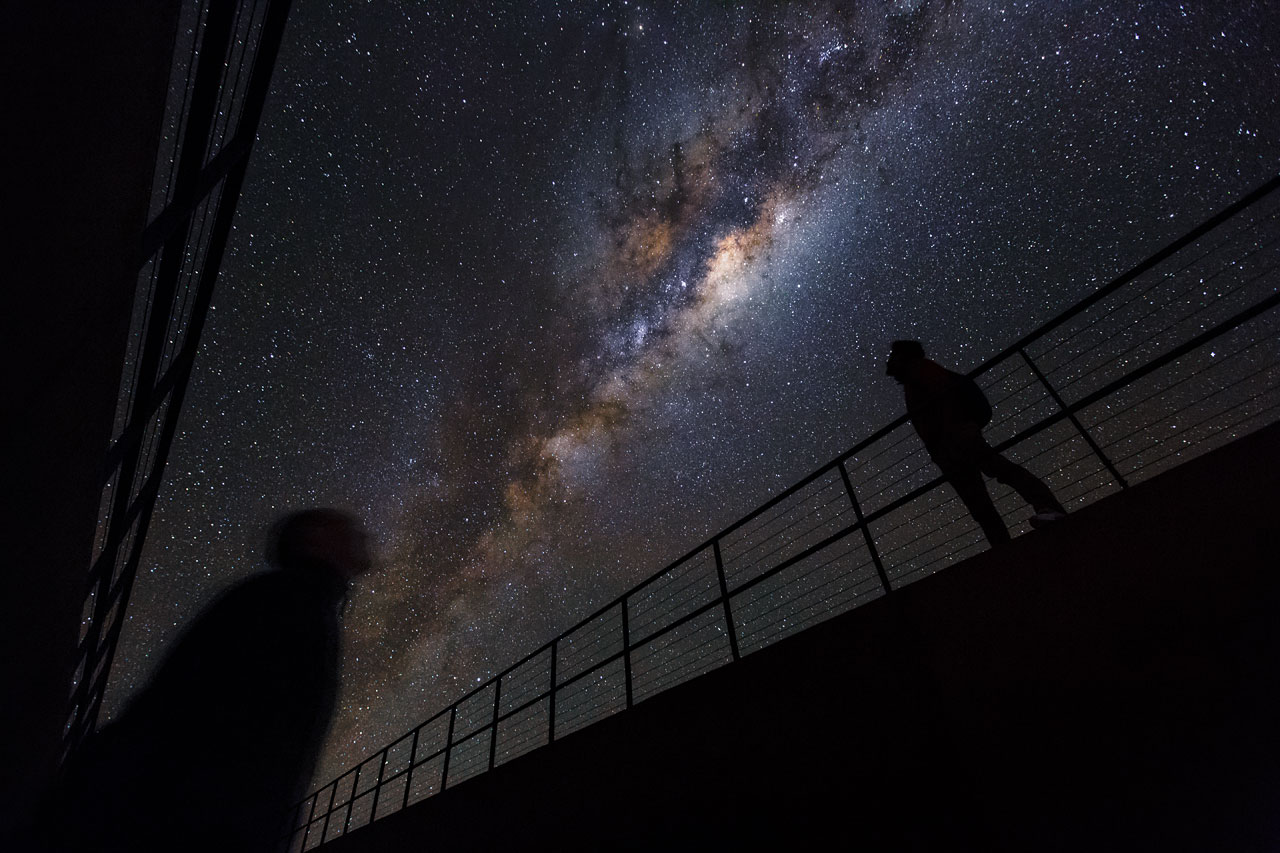
Friday, April 1, 2016: The Milky Way shines above La Residencia, the hotel of the Very Large Telescope (VLT), part of the European Southern Observatory’s Paranal Observatory in the Atacama Desert of Chile. Here, on moonless nights, the landscape can grow so dark that light from the Milky Way casts a shadow on the ground. In the photo, the murky figures of passing staff members stand in silhouette. Image released March 28, 2016.
— Tom Chao
Do the Running Man
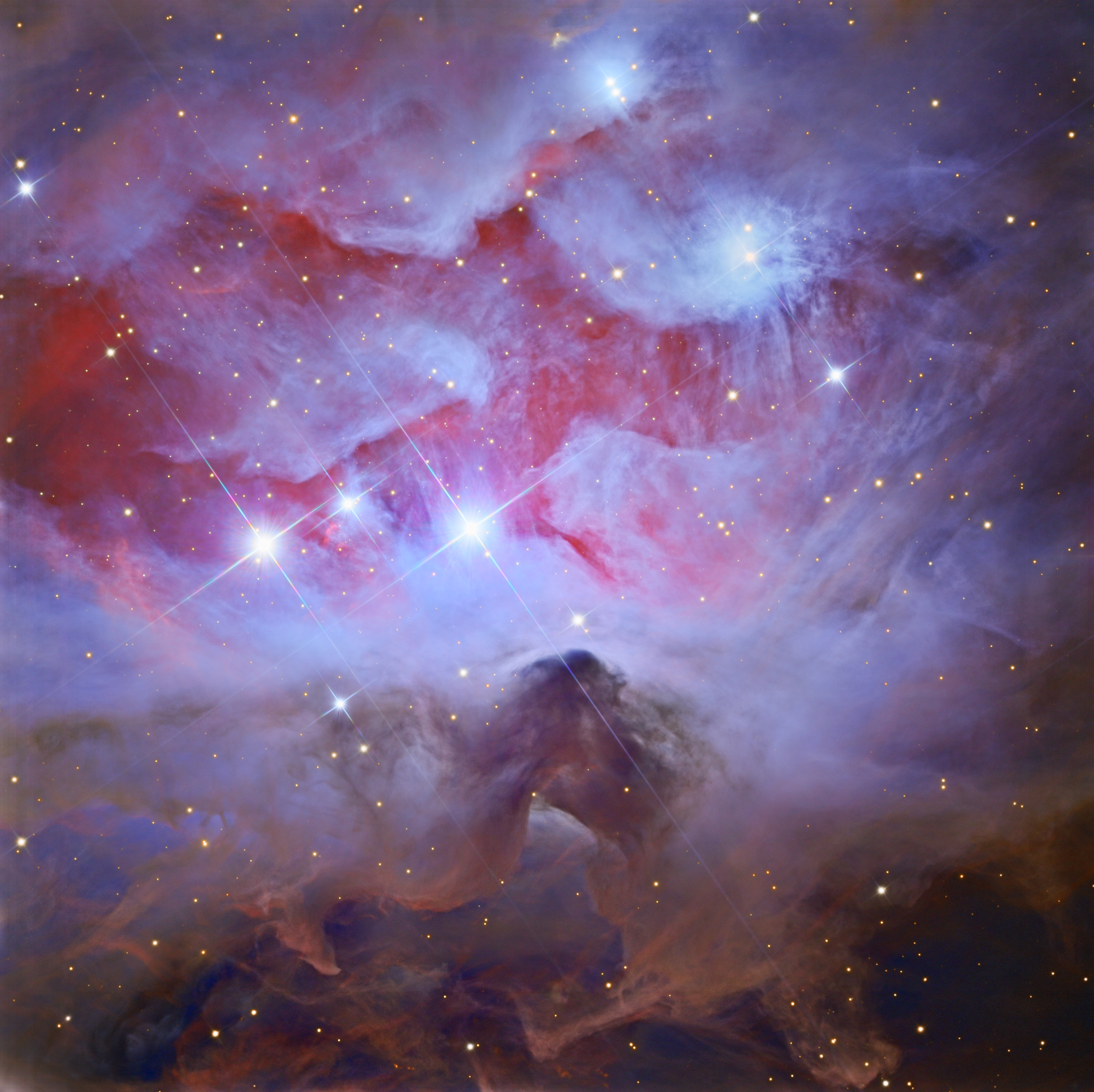
Monday, April 4, 2016: Well-known astronomer Adam Block of the Mount Lemmon SkyCenter at the University of Arizona captured reflection nebula NGC 1977, AKA the "Running Man Nebula." It lies in the constellation of Orion, about 1,500 light years from Earth. On Facebook, Block wrote: "The mixing of gas and dust, especially towards the bottom of the frame, is particularly mesmerizing. This is a new interpretation of a famous nebula. Be certain to click and see the largest version of the image which ultimately displays the finest resolution and hopefully gives a sense of depth (with brownish dust clouds in the foreground, blue scattered light more in the middle and the bright red glow coming from deep within the nebula). Enjoy this first image of the year and I hope you agree it is one that clearly communicates that I hope to hit the ground 'running' with more to follow." Image released Jan. 8, 2016.
— Tom Chao
Lights in the Night
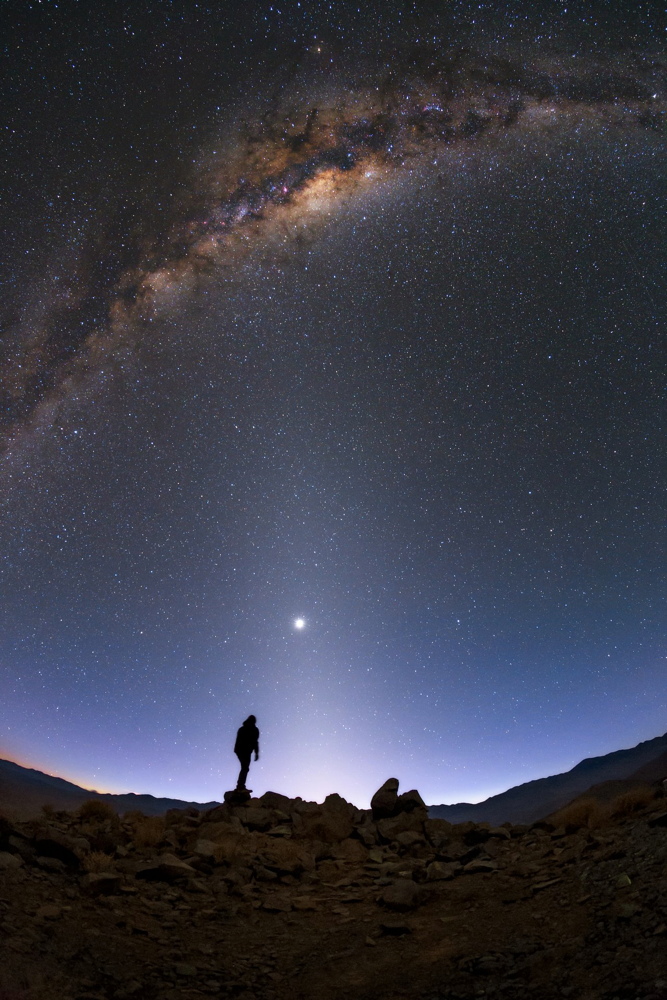
Tuesday, April 5, 2016: Zodiacal light rising from the horizon, red airglow along the horizon, and the Milky Way all appear in this photo taken in the Chilean desert. Zodiacal light results from cosmic dust floating in the ecliptic, the plane of Earth’s orbit, scattering sunlight. Airglow arises from upper atmosphere processess, including cosmic rays, recombining photoionized atoms, and chemical reactions between oxygen, nitrogen, hydroxyl, sodium, and lithium atoms. Billlions of stars glow in the Milky Way, our galaxy, high above. Image released April 4, 2016.
— Tom Chao
You've Got an Unusual Aurora Over You, Canada
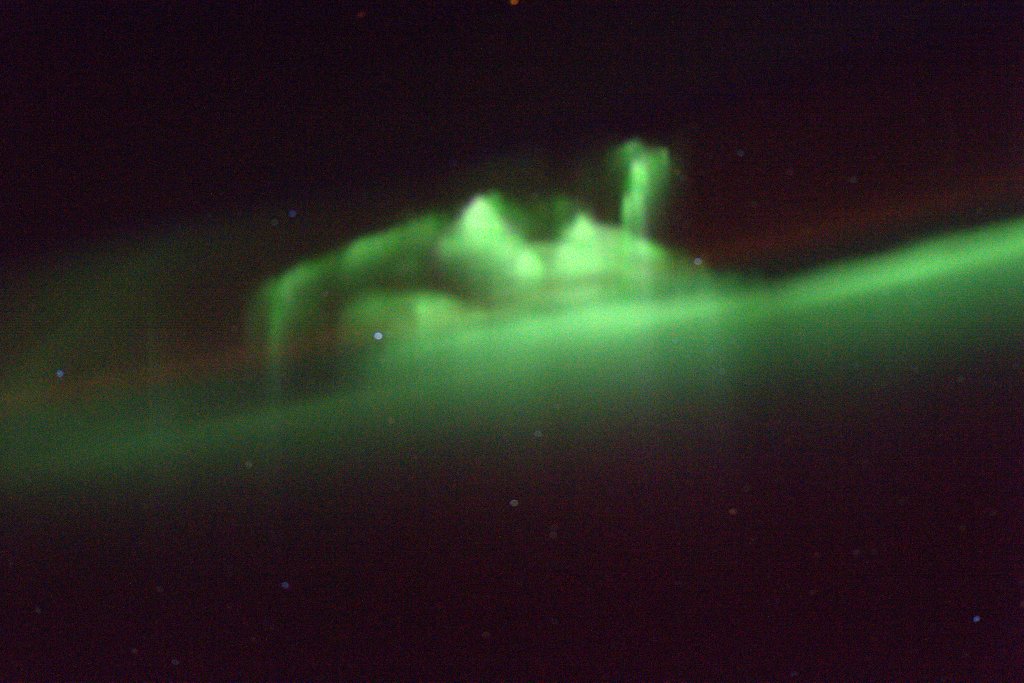
Wednesday, April 6, 2016: NASA astronaut Jeff Williams, aboard the International Space Station, tweeted a photo of an aurora over Canada on April 5, 2016. He wrote, “Unusual aurora over Canada.” Williams, a member of the Expedition 47/48 crew, launched to the station on March 18. Auroras occur when charged particles from the sun interact with atoms and molecules in the Earth's upper atmosphere.
— Tom Chao
A Comet Appears
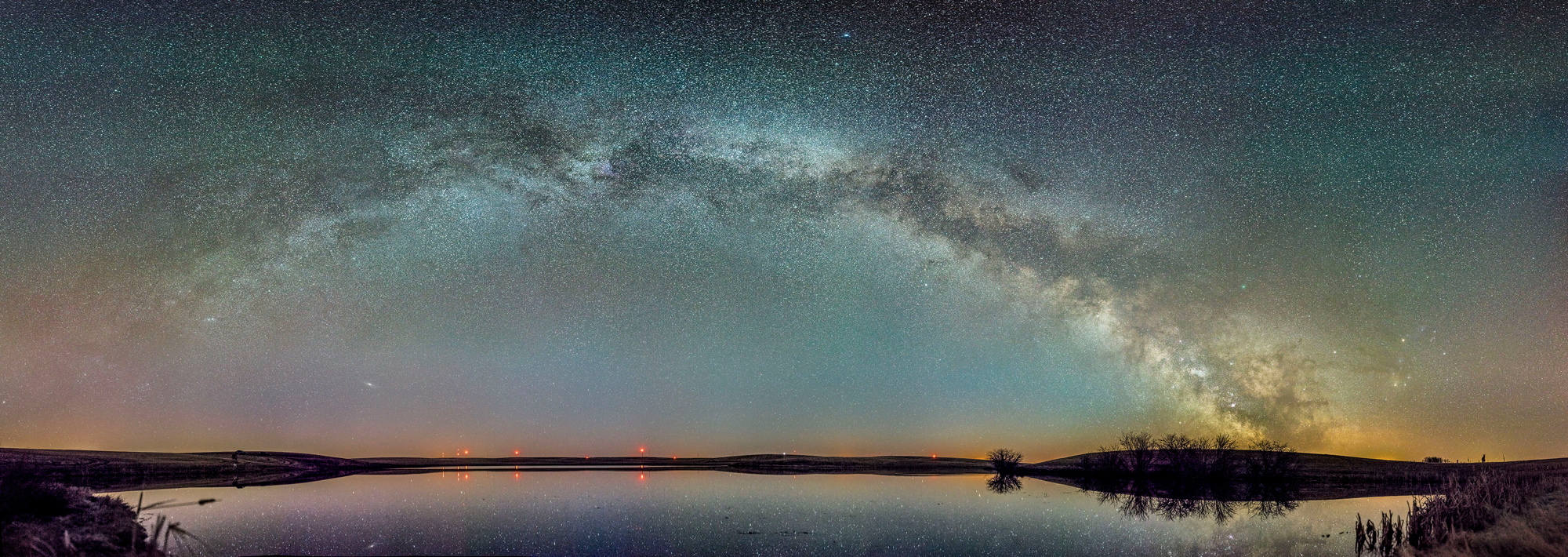
Thursday, April 7, 2016: Astrophotographer Tony K. Wong sent in a panorama showing the Milky Way taken near Dalum, Alberta, Canada, on April 4, 2016. He writes in an email message to Space.com: "This is a panorama photo taken with a 50mm lens by stitching 60 frames together. Comet 252P/Linear is clearly visible on the right hand side as the bright green 'star' just above the core of the Milky Way."
— Tom Chao
Tilt
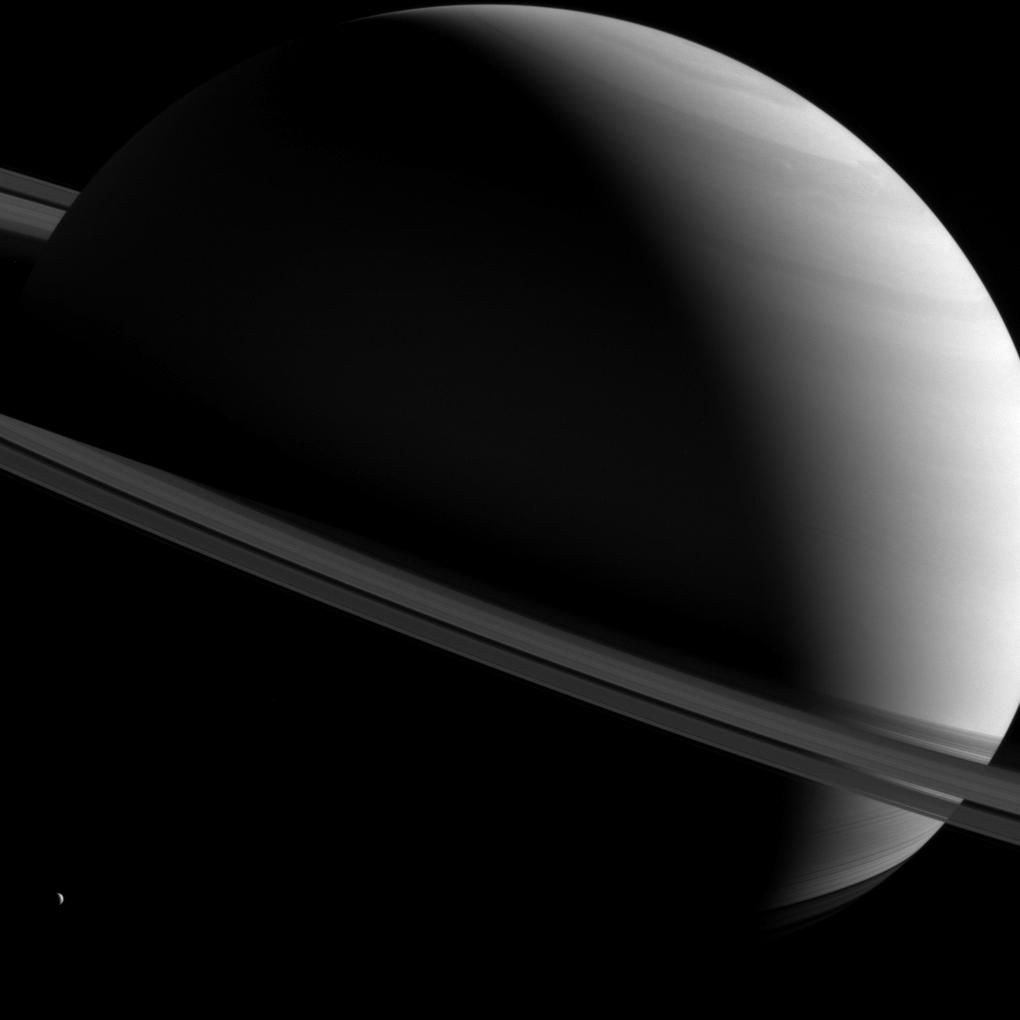
Friday, April 8, 2016: In this Cassini spacecraft image, Saturn has an unusual appearance which differs from its usual depiction with north at the top. However, the skew owes only to the position of the camera, as Cassini views the ringed planet from many different angles. At lower left, Saturn's moon Dione floats, dwarfed by the planet. The terminator, dividing night from day on Saturn, also appears askew, as the planet approaches northern summer solstice, during which the northern pole remains in sunlight all during Saturn's day, similar to the situation on Earth in northern summer. Cassini spacecraft obtained the image on Feb. 19, 2016, and it was released on April 4.
— Tom Chao
Get the Space.com Newsletter
Breaking space news, the latest updates on rocket launches, skywatching events and more!
Dragon Fire
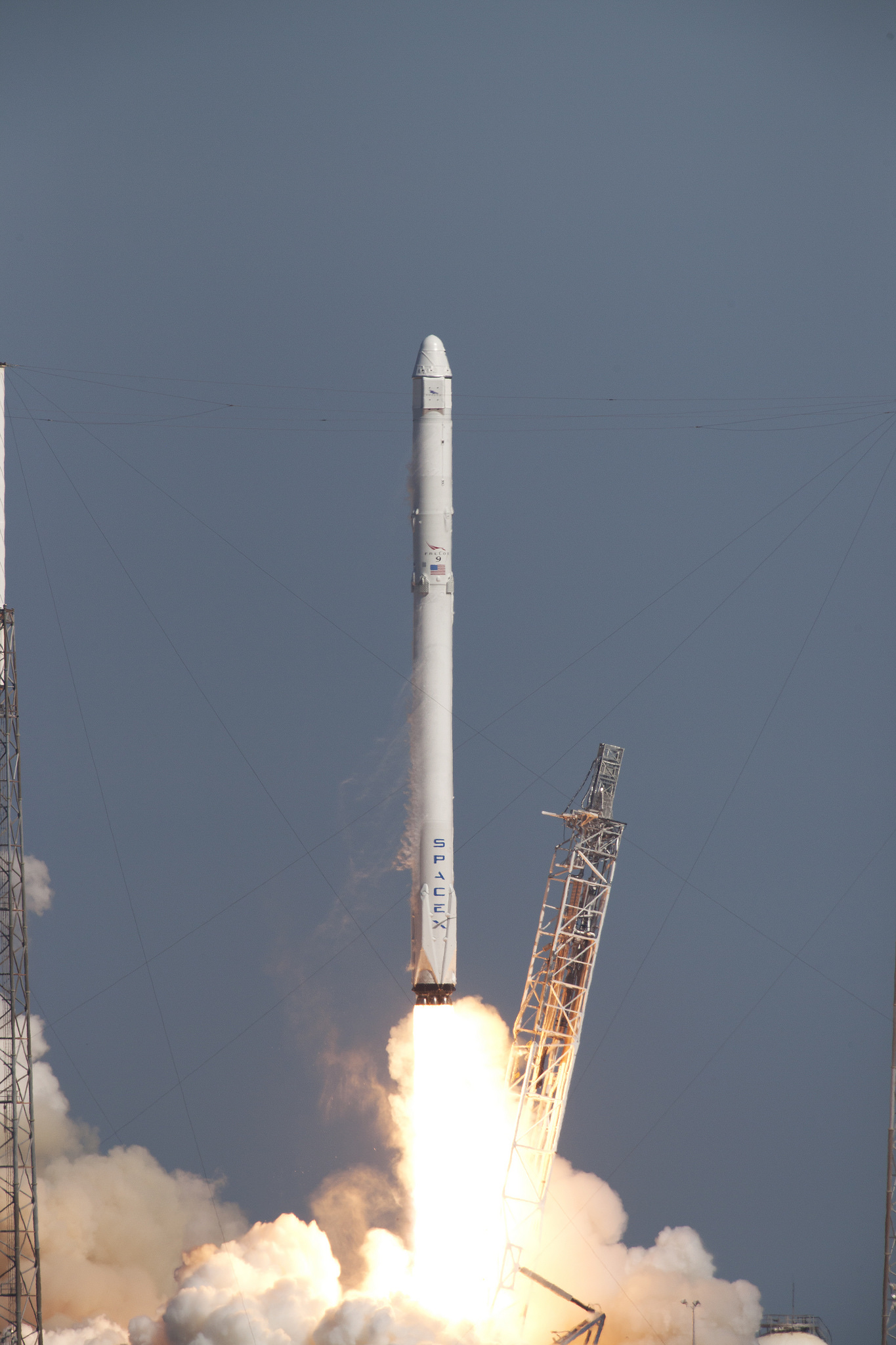
Monday, April 11, 2016: SpaceX's Falcon 9 rocket launched a Dragon cargo capsule to the International Space Station from Cape Canaveral, Florida, on April 8, 2016. The eighth commercial resupply services mission carried out by the private spaceflight company brought almost 7,000 pounds (3,175 kilograms) of supplies to the space station. After launching the cargo capsule, the rocket’s first stage successfully returned to Earth and landed on a drone ship landing platform in the Atlantic Ocean, the first time such a landing had been achieved.
— Tom Chao
Long Hole
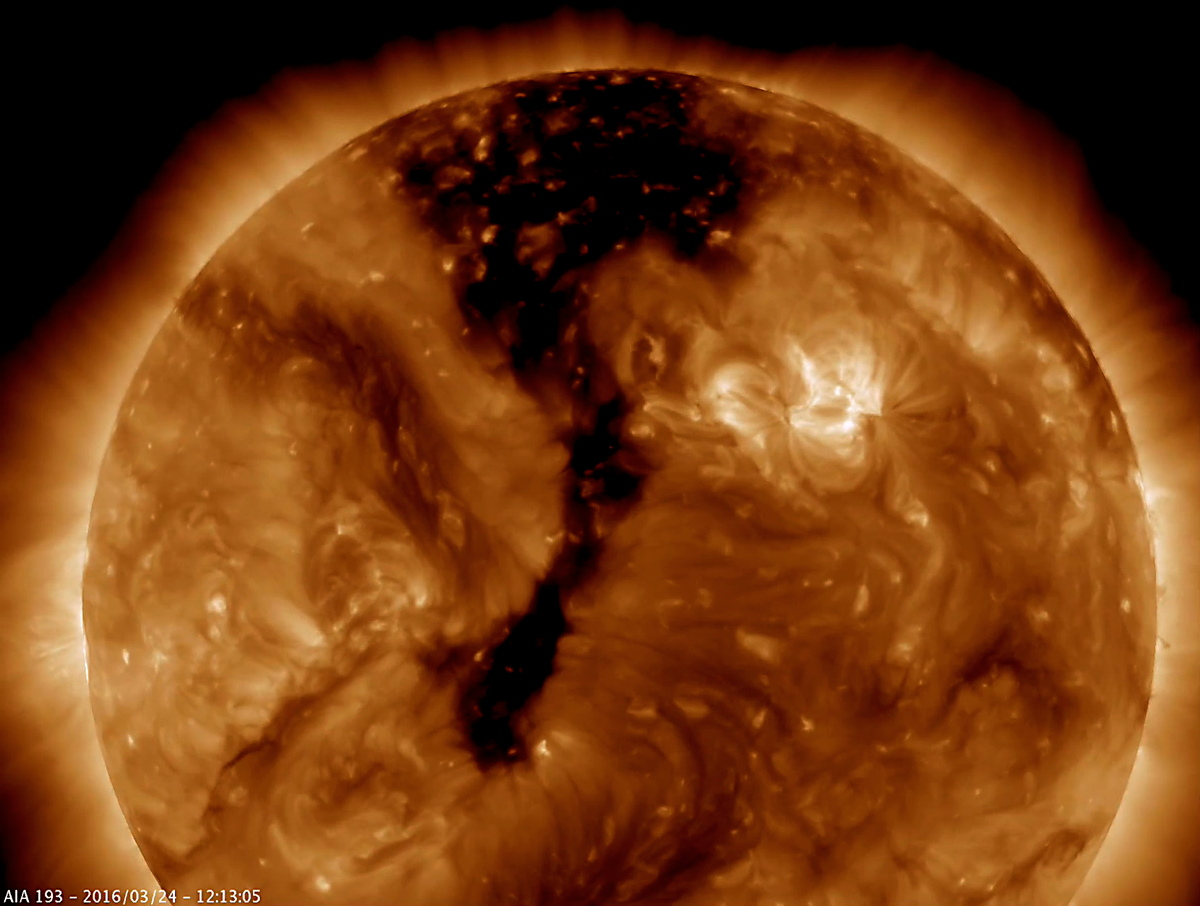
Tuesday, April 12, 2016: A long coronal hole on the sun rotated into view on Mar. 23-25, 2016. The dark area extending from the top of the sun to the center is the coronal hole, which appears dark in some wavelengths of extreme ultraviolet light. Coronal holes are areas which are open magnetically, allowing high-speed solar wind to stream into space. Solar wind particles that reach Earth's atmosphere can produce auroral displays.
— Tom Chao
I Am Not So Bright
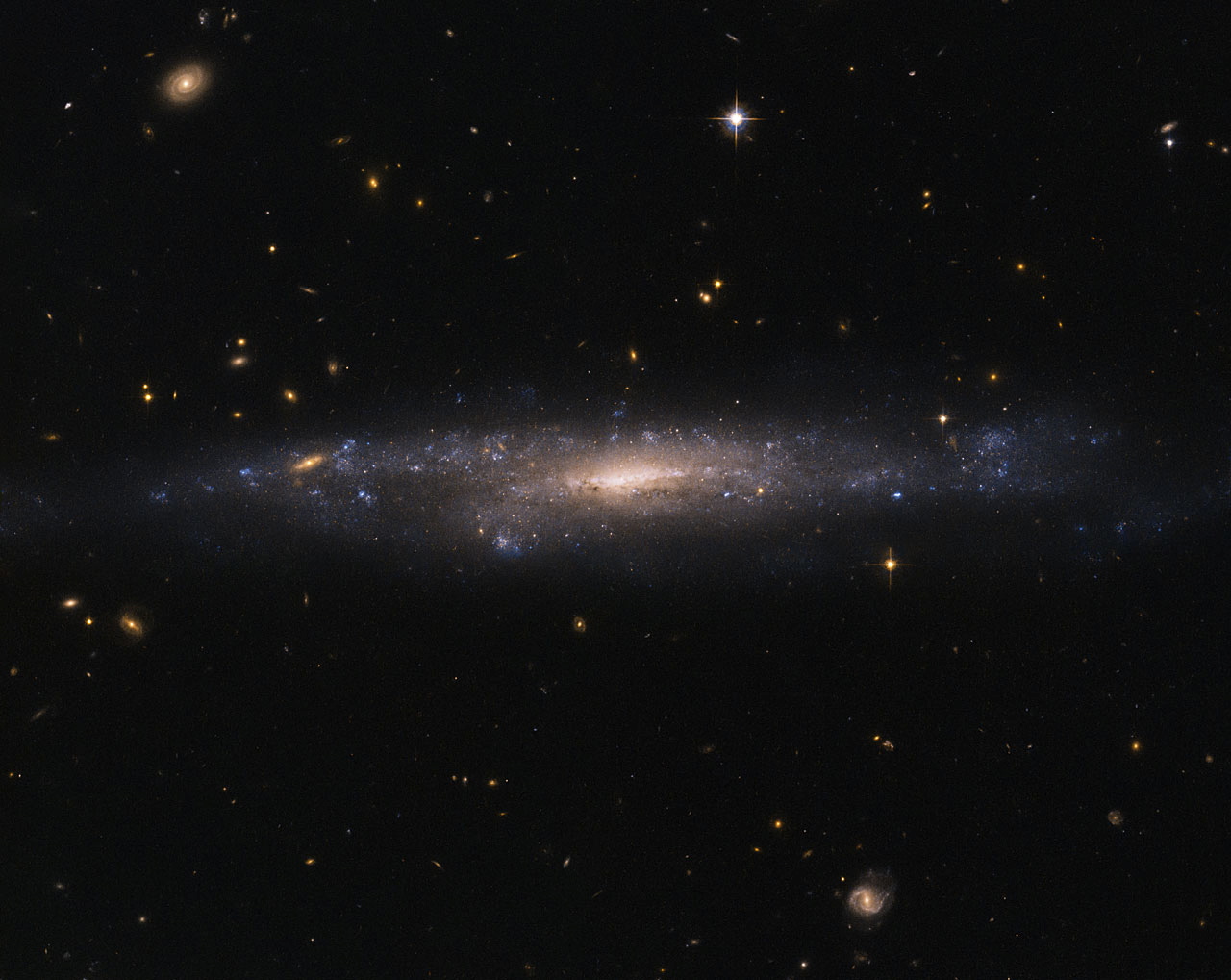
Wednesday, April 13, 2016: Galaxy UGC 477 lies just over 110 million light-years away in the constellation of Pisces (The Fish). Astronomers categorize UGC 477 as a low surface brightness (LSB) galaxy. Mike Disney first proposed these galaxies in 1976, and their existence was confirmed only in 1986 with the discovery of Malin 1. LSB galaxies like UGC 477 have a more diffuse distribution than galaxies such as Andromeda and the Milky Way. Surface brightnesses less than 250 times fainter than the night sky make these galaxies very difficult to detect. LSB galaxies mainly appear in regions devoid of other galaxies, so perhaps the lack of galactic interaction has not caused more star formation. However, LSB galaxies appear to contain a dominating amount of dark matter, so these objects may help understand the mysterious substance.
— Tom Chao
I'm Only Passing Through
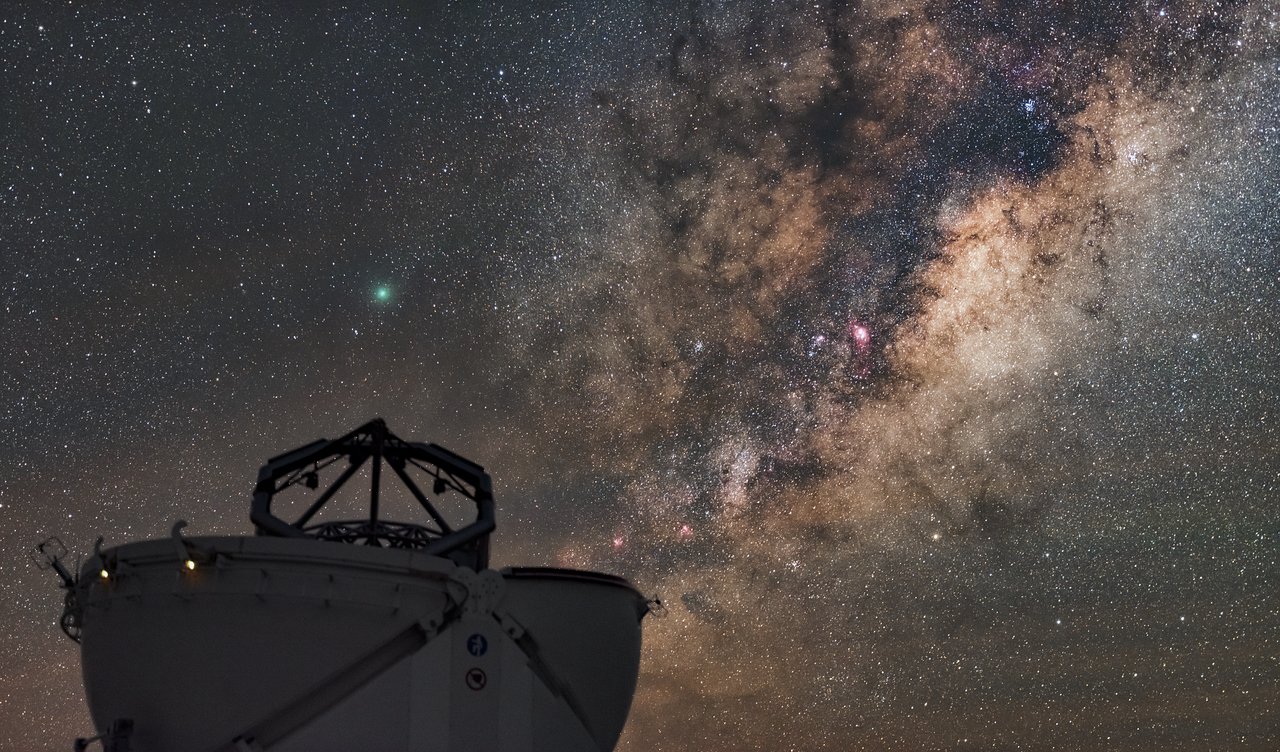
Thursday, April 14, 2016: The Auxiliary Telescope at the Very Large Telescope (VLT) appears to point at comet 252P/LINEAR in the night sky above Paranal Observatory in Chile. The comet, appearing as a green dot, was discovered in April 2000, and it has been travelling between the orbits of Jupiter and Earth in the inner solar system. In March 2016, it passed by a distance of 5.2 million kilometers (3.2 million miles) from Earth, making it the fifth closest recorded passage of a comet. It remains visible in the southern hemisphere presently. Fluorescing carbon-based gas surrounding the comet causes the green color.
— Tom Chao
Join our Space Forums to keep talking space on the latest missions, night sky and more! And if you have a news tip, correction or comment, let us know at: community@space.com.

Space.com is the premier source of space exploration, innovation and astronomy news, chronicling (and celebrating) humanity's ongoing expansion across the final frontier. Originally founded in 1999, Space.com is, and always has been, the passion of writers and editors who are space fans and also trained journalists. Our current news team consists of Editor-in-Chief Tariq Malik; Editor Hanneke Weitering, Senior Space Writer Mike Wall; Senior Writer Meghan Bartels; Senior Writer Chelsea Gohd, Senior Writer Tereza Pultarova and Staff Writer Alexander Cox, focusing on e-commerce. Senior Producer Steve Spaleta oversees our space videos, with Diana Whitcroft as our Social Media Editor.
